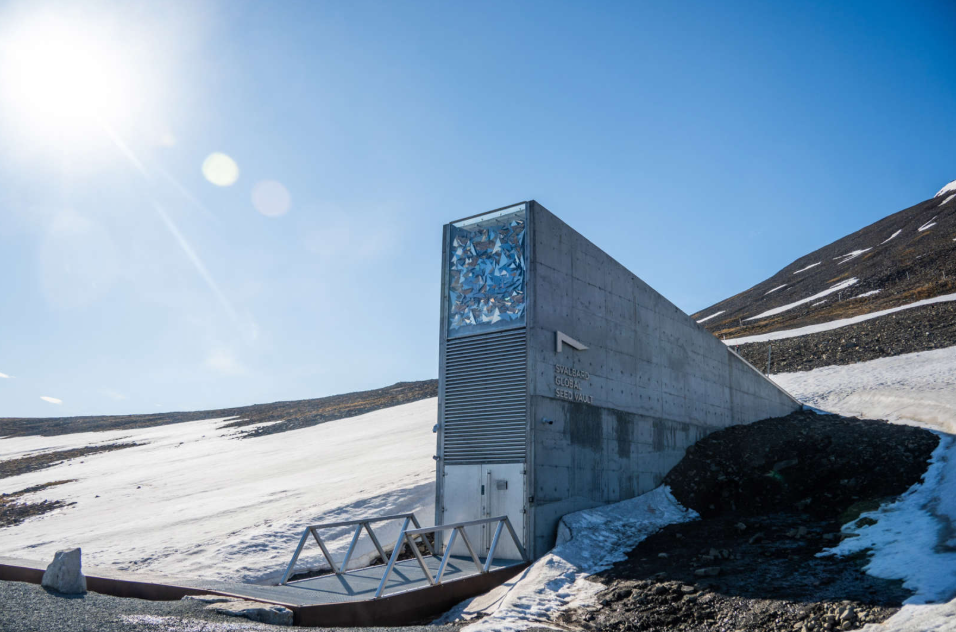Tucked away deep in the Arctic Circle lies one of the world’s most important yet little-known structures the Svalbard Global Seed Vault. Built into a frozen mountain on the Norwegian island of Spitsbergen, this “doomsday vault” serves as a backup library of life, holding millions of crop seeds from almost every corner of the world. Its mission is simple but crucial: to ensure that humanity’s food supply can be restored in case of war, natural disaster, or climate crisis.
Preserving global crop diversity for future generations
Norway officially opened the seed vault in 2008 as a secure storage facility for the world’s agricultural heritage. Countries from every continent now send duplicates of their most important crop seeds, ensuring humanity does not lose these varieties if local gene banks collapse or fall into disrepair. Today, the vault stores more than a million seed samples from rice and wheat to beans and maize representing the foundation of human diets.

This diversity is critical because modern agriculture often relies on only a few high-yield crop varieties. The vault stands as humanity’s safeguard against such scenarios.
Why the Arctic is the safest place for the seed vault
The choice of location is not random. Svalbard offers natural protection thanks to its permafrost and remote setting. The seeds are stored at around -18°C, and even if power fails, the natural cold environment can preserve them for centuries. The mountain’s thick rock provides further protection against human conflict or disasters.
Norway’s government, in partnership with the Global Crop Diversity Trust and the Nordic Genetic Resource Center, manages the vault. Its design ensures neutrality and trust all seed deposits remain the property of the countries or institutions that contribute them.
Seeds as a solution for climate change and global crises
With the world facing rapid climate change, the importance of seed banks has grown. Rising temperatures, floods, droughts, and changing weather patterns are putting pressure on agriculture everywhere. Many traditional and local seed varieties, which are more resilient to harsh conditions, are disappearing.
The seed vault ensures these varieties are not lost forever. In fact, it has already proven its value. In 2015, scientists in Syria were able to withdraw seeds from Svalbard after conflict damaged their gene bank in Aleppo. Those seeds were later replanted in Lebanon and Morocco, showing how the vault can help restore agriculture after a crisis.
Protecting the future through seeds
The Svalbard Global Seed Vault is one of the most valuable investments humanity has made for its survival. By quietly storing the building blocks of food security in a frozen Arctic mountain, it ensures that future generations can still grow the crops needed to feed the world.
The Arctic vault reminds us that safeguarding biodiversity is essential not only for today but for generations to come. Without crop diversity, humanity risks losing the ability to adapt to future challenges — whether those are climate shocks, pandemics, or conflicts.
As climate change and global instability continue, this vault stands as a symbol of resilience, foresight, and the importance of preserving nature’s diversity for the survival of humanity.

